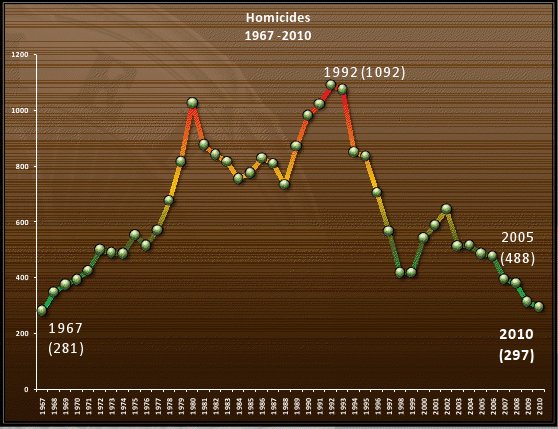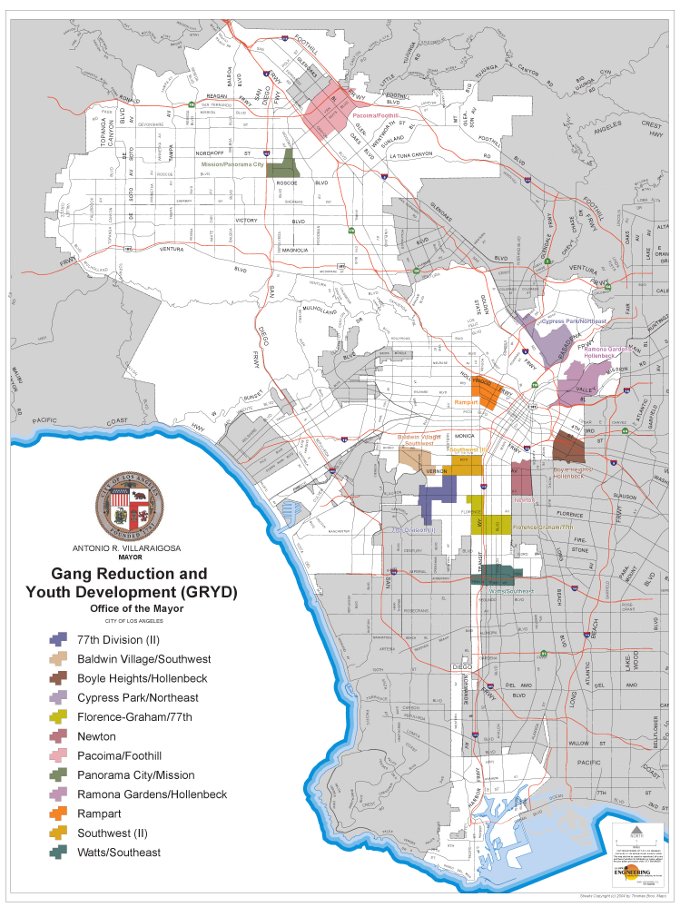 The LAPD reported a total of 297 homicides in the city this year, making it the quietest year for murder since 1967.
The LAPD reported a total of 297 homicides in the city this year, making it the quietest year for murder since 1967.
“I am proud to announce that last year the City suffered fewer murders than at any point since 1967,” said Mayor Antonio Villaraigosa during press conference. “This is not just a year-end statistic; it is perhaps the most powerful statement on the state of our city and our Police Department.”
More than 40 years have passed since the total number of homicides in the city equaled less than 300.
LAPD Chief Charlie Beck hailed the men and women of the police force for their part in homicide reduction, but added: “There are more lives that can be saved. Working together with our communities, the LAPD will be committed to doing just that in 2011.”
The drop in homicides represents a five percent decrease since 2009, and a 22 percent decrease since 2008. Murder rates have continued to fall in the past few years, declining by one third since 2007. With fewer than 300 murders in 2010, the city has experienced a 75 percent drop in homicides since 1992, when murders peaked to 1,092.

Homicides have been decreasing throughout the county, with a total of 596 murders in 2010. The year previous, 2009, saw 739 homicides in L.A. In 2008, there were 879 murders and in 2007 there were 939. Factoring in population, 2010 represents the lowest homicide rate per capita since 1964. In 1992, the most recent peak of violent crime in Los Angeles, there were 3.09 homicides per 10,000 people. In 2010, there were 0.74 homicides per 10,000 people.
“Even during tough economic times, we have kept our sights on a more hopeful, promising and safer future and the statistics once again shed light on a much brighter outcome for our City,” said Villaraigosa. “Our unwavering commitment to public safety has yielded tangible results and has saved lives.”

The LAPD Valley Bureau saw the greatest reduction in homicides, with an 11.76 percent drop since 2009. The Central Bureau, however, reported an increase from 93 to 95 killings in the area from 2009 to 2010.
Although the year ended well statistically, a slew of murders around the Christmas period included four killings on Christmas Eve and five murders on Christmas Day. Both 2007 and 2009 had fewer murders on Christmas Day, with 10 murders on Christmas Day in 2008.
Statistics and graph from LAPD Online.















